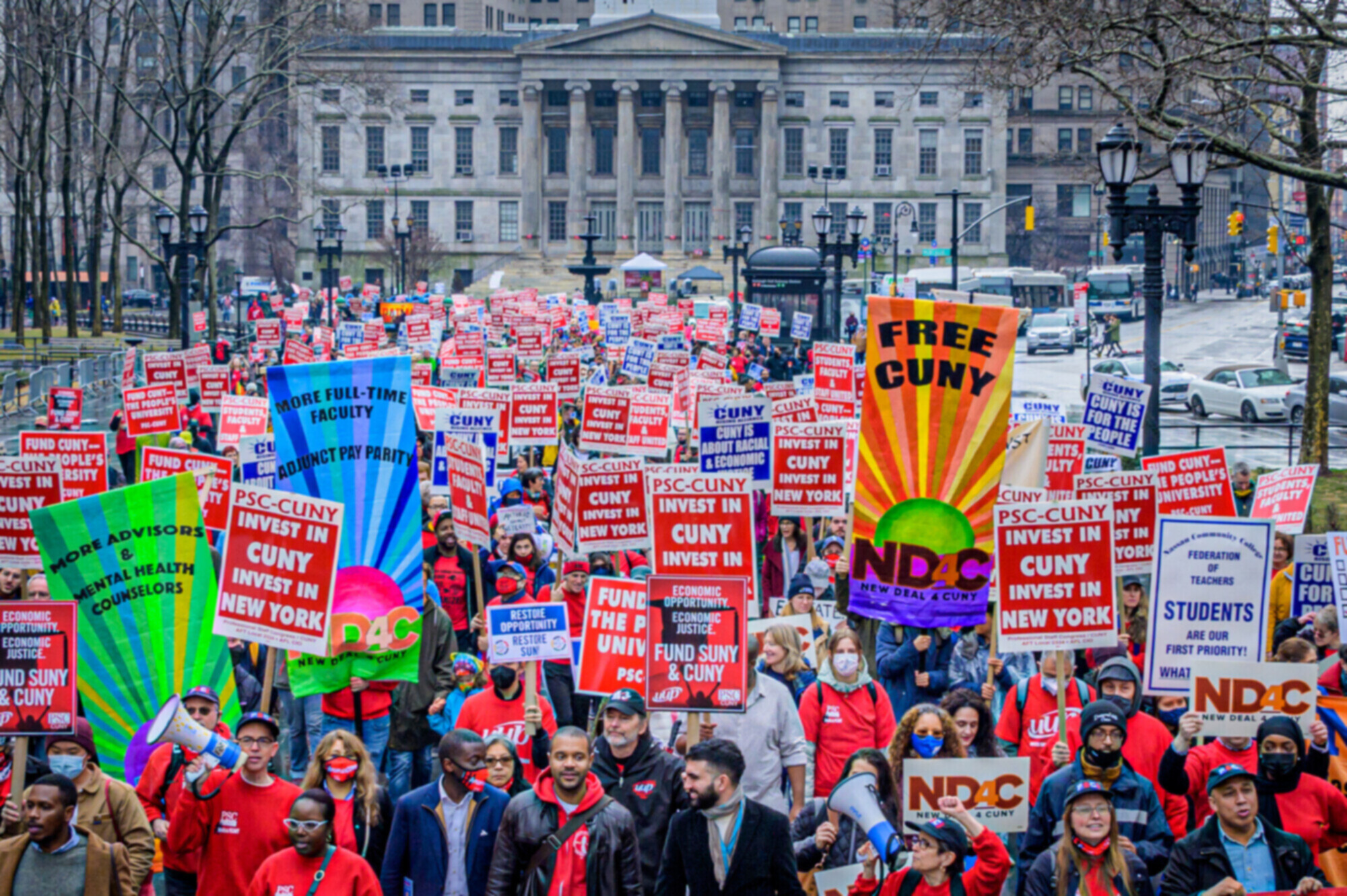 |
Documentary filmmaking has flourished in the past 20 years – and Kelly Anderson, associate professor of film and media studies at Hunter College, has done her part to make that happen. Director and producer, teacher and mentor, Anderson has made award-winning films that tackle controversial themes such as workplace discrimination against LGBT people (Out at Work, 1997) and NYPD police shootings (Every Mother’s Son, 2004), both of which she produced with a fellow professor of film and media studies at Hunter, Tami Gold. Anderson most recently teamed up with Hunter graduate student Allison Lirish Dean and others to create My Brooklyn (2013), which explores Brooklyn’s rapid gentrification and its roots in discriminatory policies sanctioned by the federal government. My Brooklyn debuted on television January 14 as part of the PBS World series America ReFramed.
Why I made My Brooklyn
What’s going on now with gentrification is, at least in part, another step in a historical pattern of uprooting people to see how much money you can make. We wanted to demystify the process of how neighborhoods change so people can address the deeper roots of this problem.
Hunter students and My Brooklyn
It was a super-collaborative project. The film’s associate producer was a graduate assistant who handled sound recording, animation and graphic design. Undergraduates served as production assistants who helped with equipment and ran errands as needed. They got a chance to see how a movie is made.
My approach to documentary
My films have a strong point of view, but I don’t beat people over the head with it for an hour and a half. The key to a good interview is listening. A lot of students go in with a list of questions – but you have to listen closely to the answers to find the keys to a deeper understanding.
Why documentaries are booming
The cost of making a documentary has gone way down. I think the interest in documentaries is a reflection of people’s loss of faith in the idea that there is a single reliable “truth” that you can get from the mainstream media. There’s a greater understanding that you have to seek out alternate points of view, which speaks well of people’s increased sophistication.
Media and Urban Studies
I co-teach a course with Tom Angotti, who’s a professor of urban affairs and planning, called “Community Media, Advocacy & the Urban Environment.” Media students come together with urban studies students to learn how to use media for advocacy and to improve the quality of life in specific New York City neighborhoods. In a previous class, our students exposed predatory landlords in East New York and the story made The New York Times.
Headed to the Rockaways
This semester we’re going to focus on the Rockaways, a part of the city particularly hard hit by Hurricane Sandy. There’s a group there called The Wildfire Project that has done some interesting organizing. It has the promise to bring together some groups that historically have been divided by race and class. As the city looks to move ahead with a major redevelopment plan called Arverne East, there’s a chance for residents to obtain a strong Community Benefits Agreement. We’re going to look at how media can have a positive impact as a community articulates its needs and its wants.
What I love about teaching at CUNY
I love the diversity of the students and their attitudes. They come with a tremendous hunger to learn and very little sense of entitlement. I also like teaching in a public institution. It fits my values, even though it’s always a struggle to get the resources and the funding we should have.
Out at Work
In this documentary, Tami Gold and I follow a cook, an auto worker and a librarian who face harassment and discrimination because of their sexual orientation. When she and I made the film in 1997, you could be fired from your job for being gay in more than 40 states. At that time, there was also an explosion of gay and lesbian organizing and pride caucuses in unions. Our film was used extensively by organizers and it has had a lot of impact.
15 years after Amadou Diallo
Tami and I made Every Mother’s Son after the police shooting of Amadou Diallo, an unarmed young man shot dead by the police with 41 bullets. We followed the story of three mothers whose sons were killed by the NYPD and connected these shootings to larger policies that began under Rudy Giuliani, cordoning off whole neighborhoods and allowing the stopping and frisking of any young man of color in the area. To now see the end of this stop-and-frisk era is really hopeful. It was a long time coming.
My latest project
With my colleagues Marty Lucas and Mick Hurbis-Cherrie, I’m working on a book about how to make a documentary film. The title will be Documentary Voice & Vision, and it’s due out in Fall 2015. It builds on the introductory class that Marty and I have taught for over a decade. It’s going to be a big, thorough book, strong on both the technical and conceptual aspects of making a movie.

